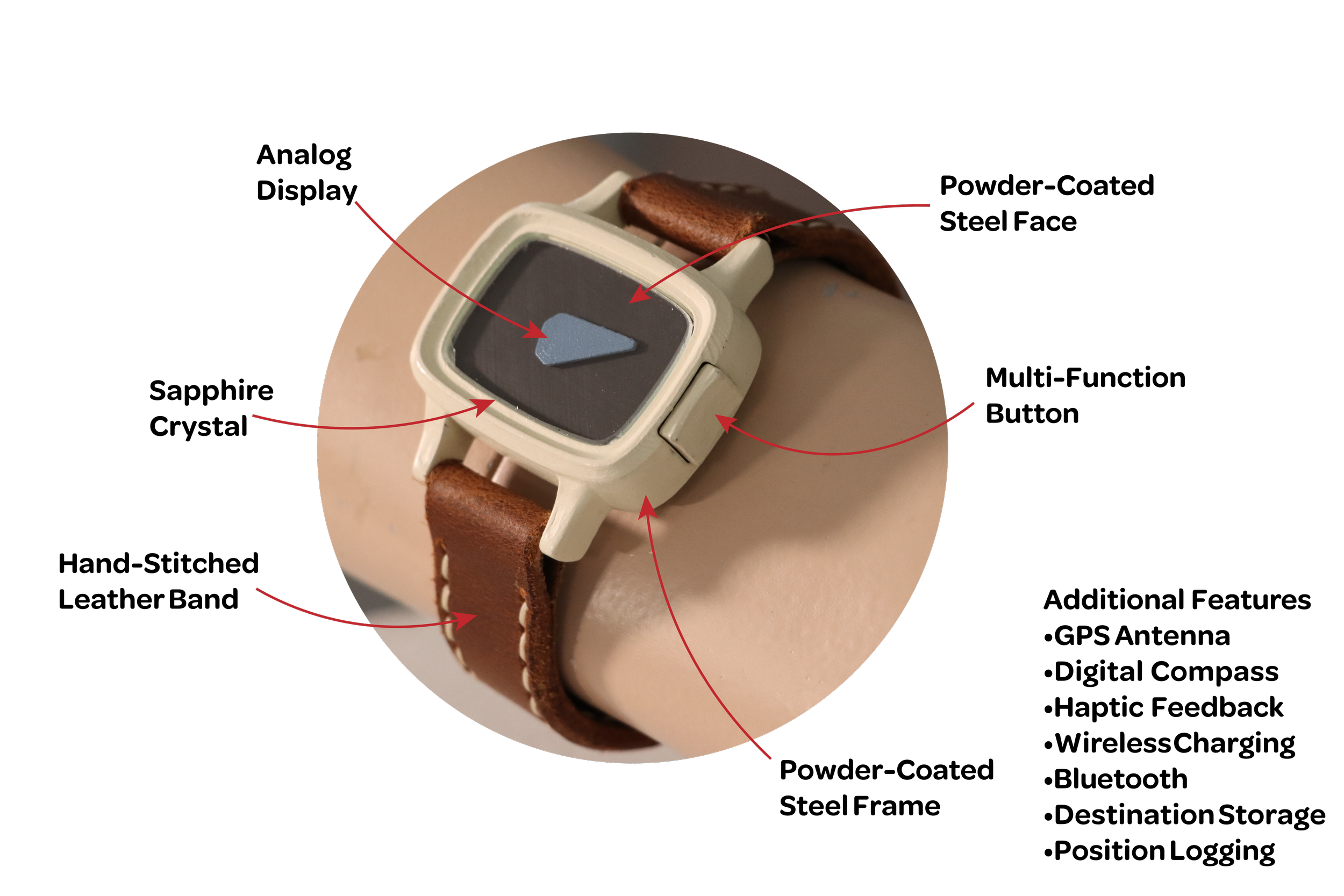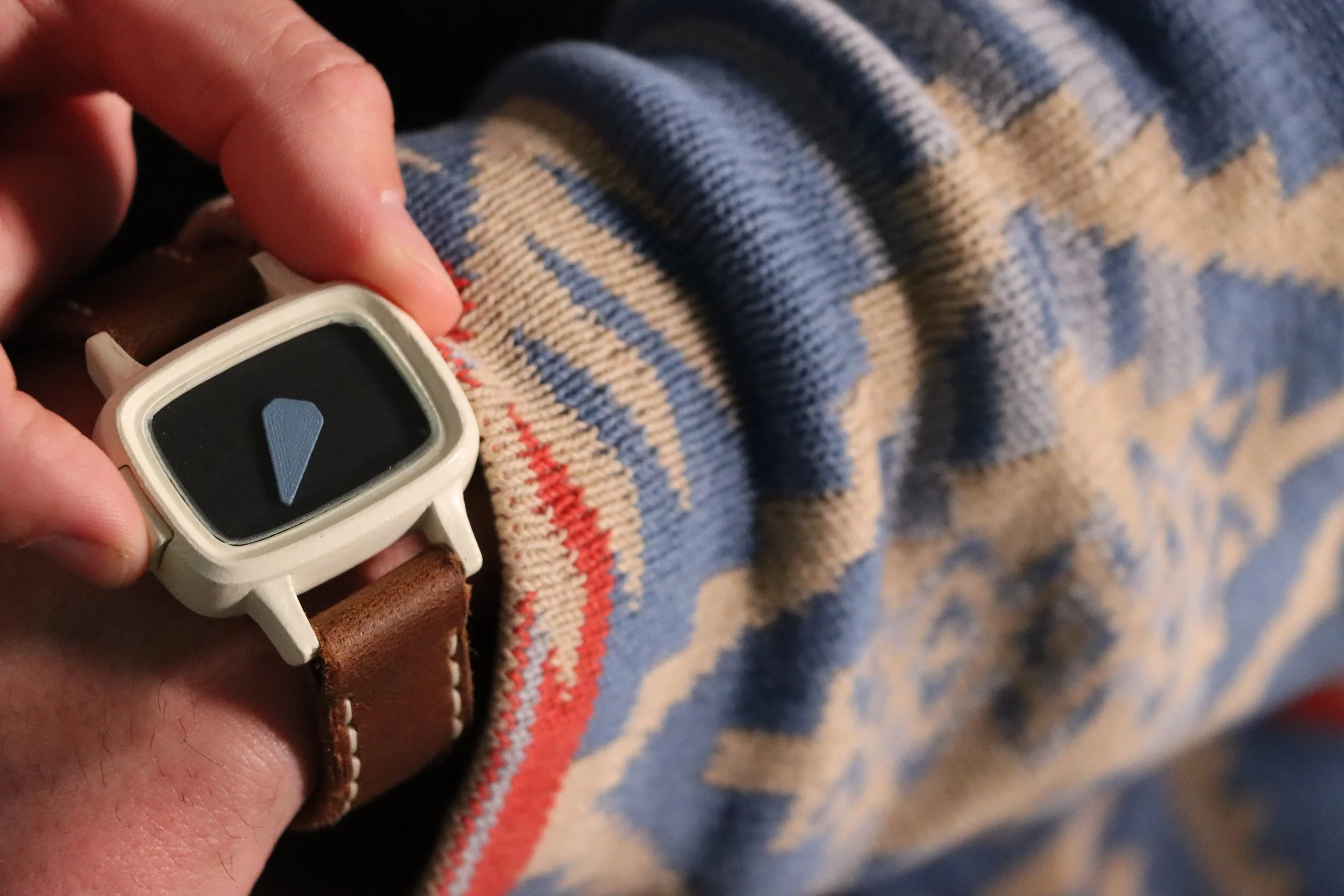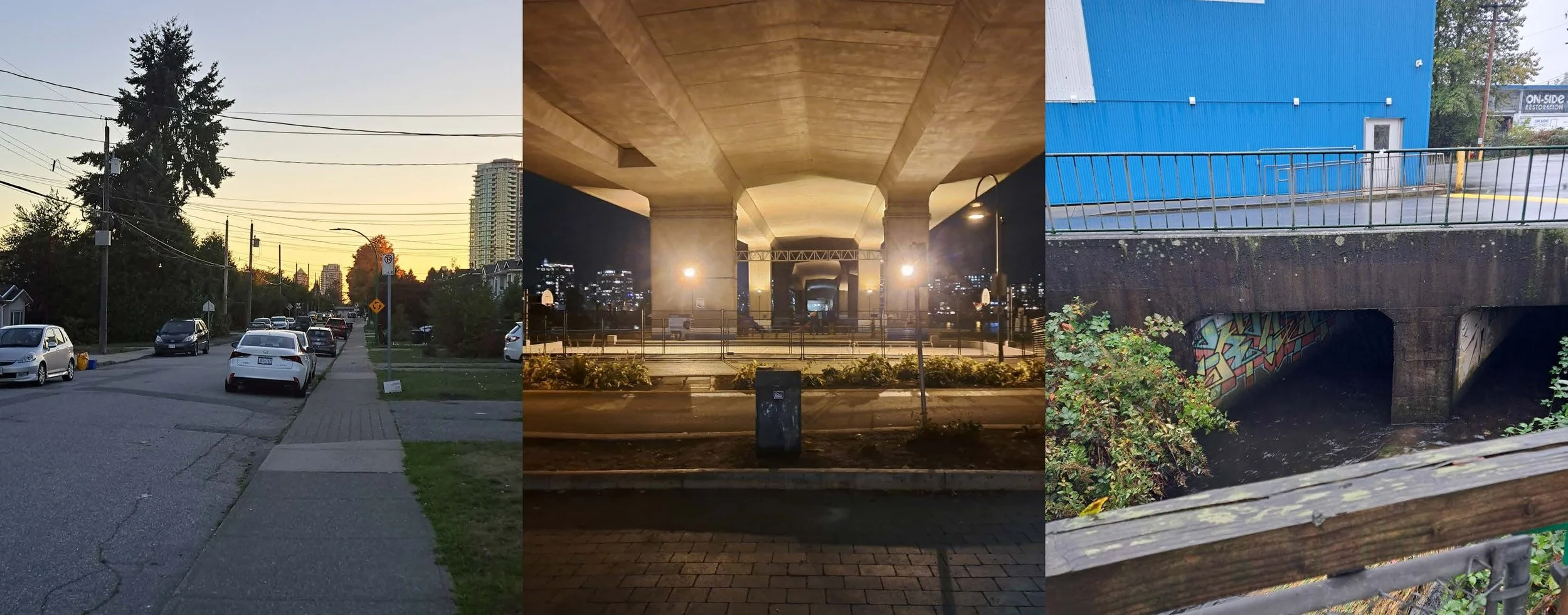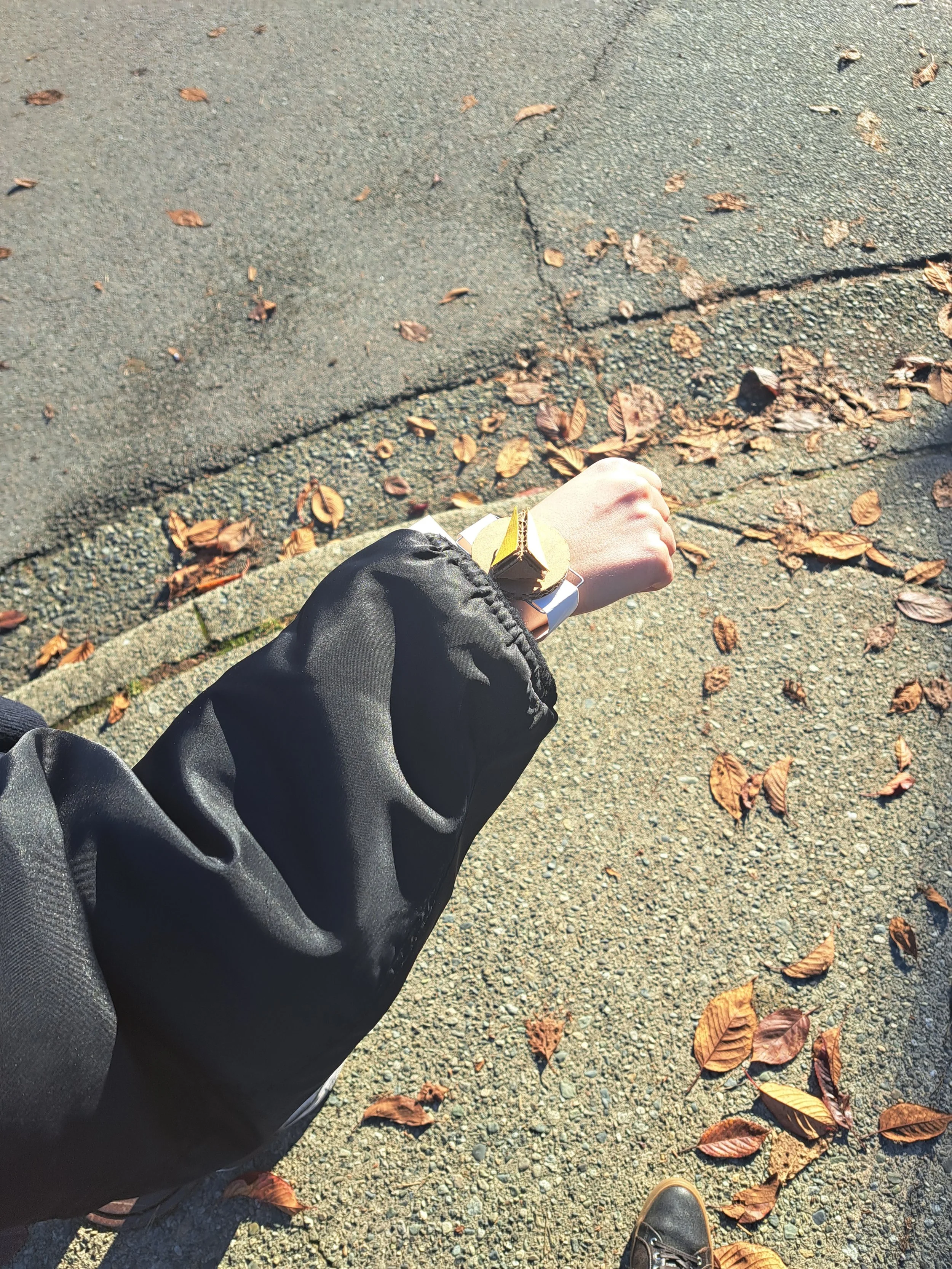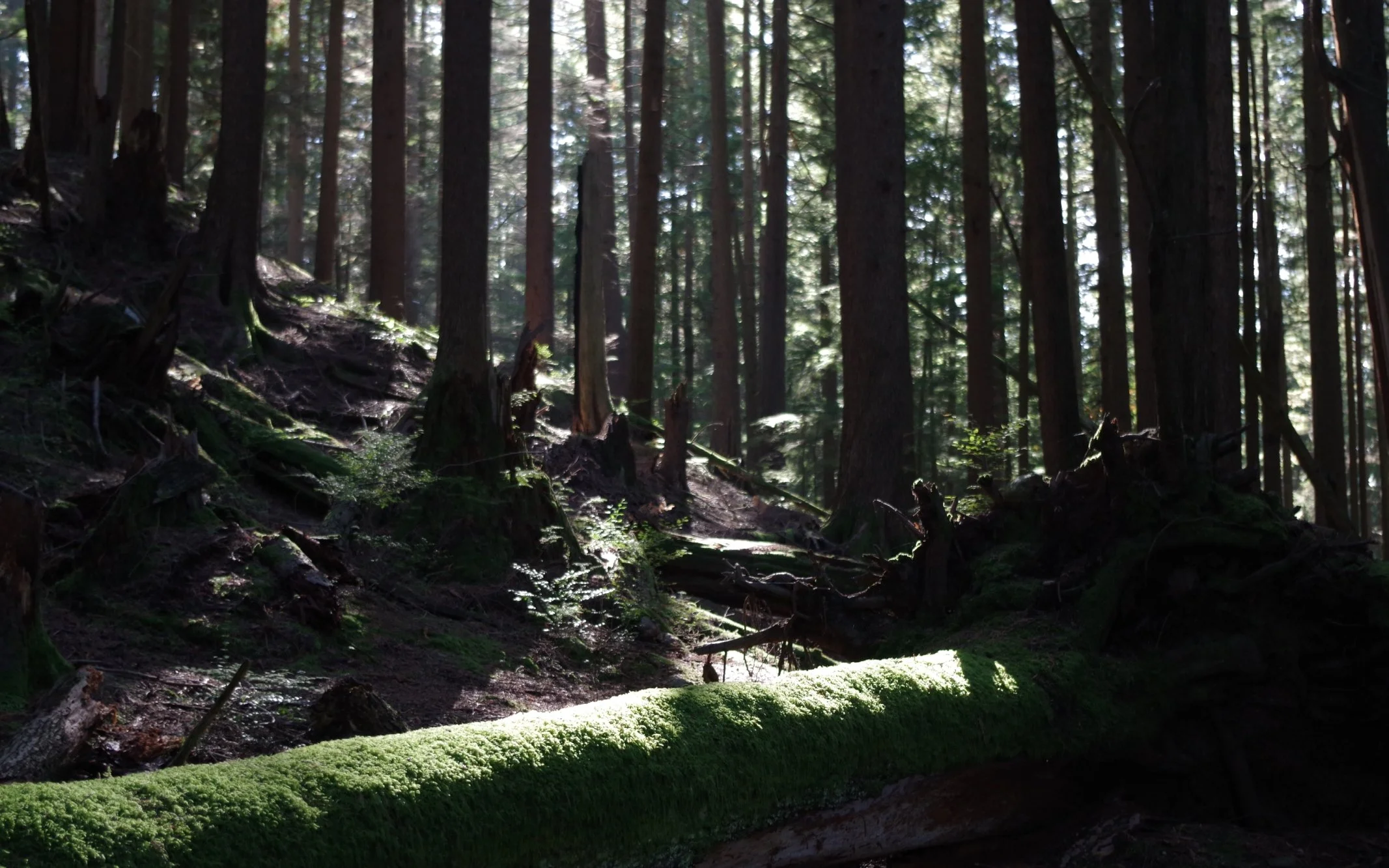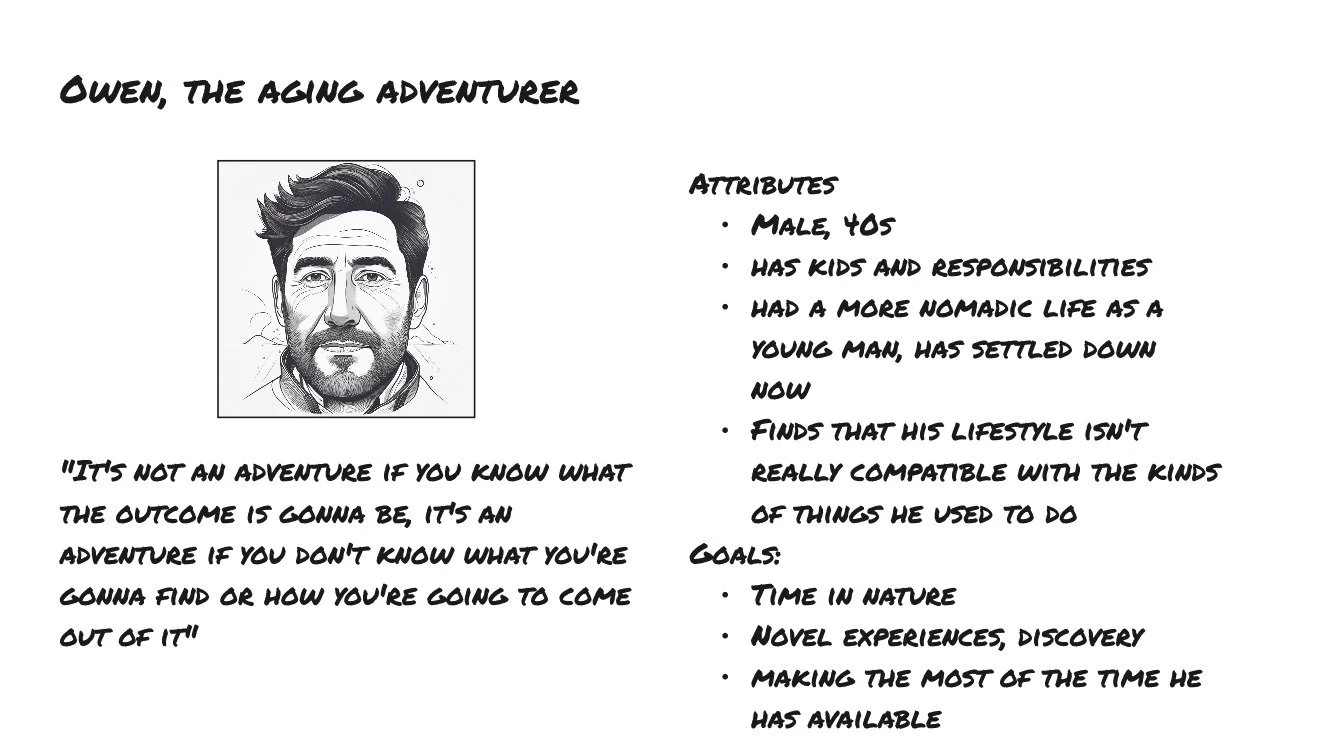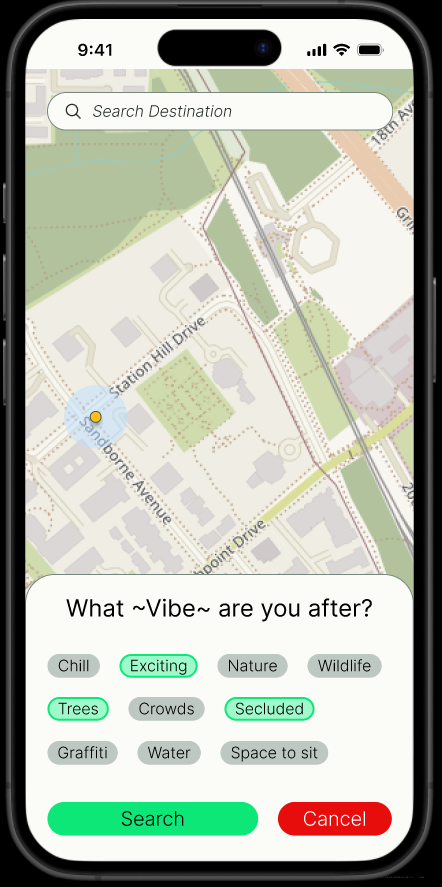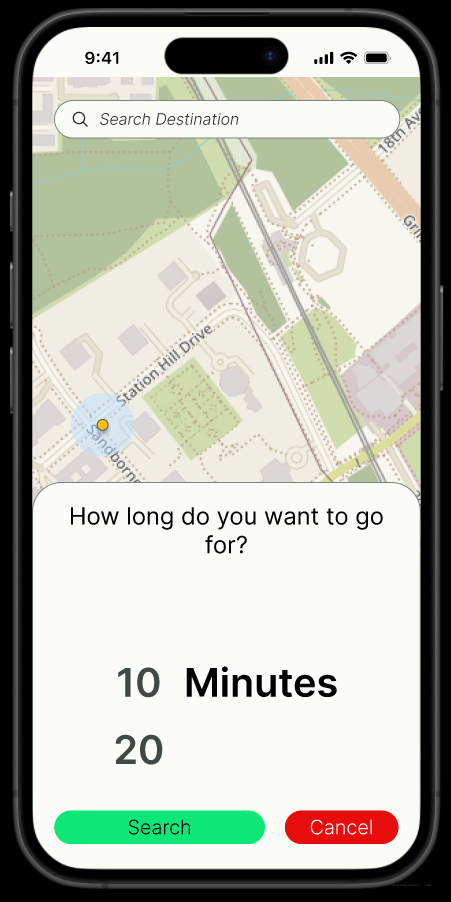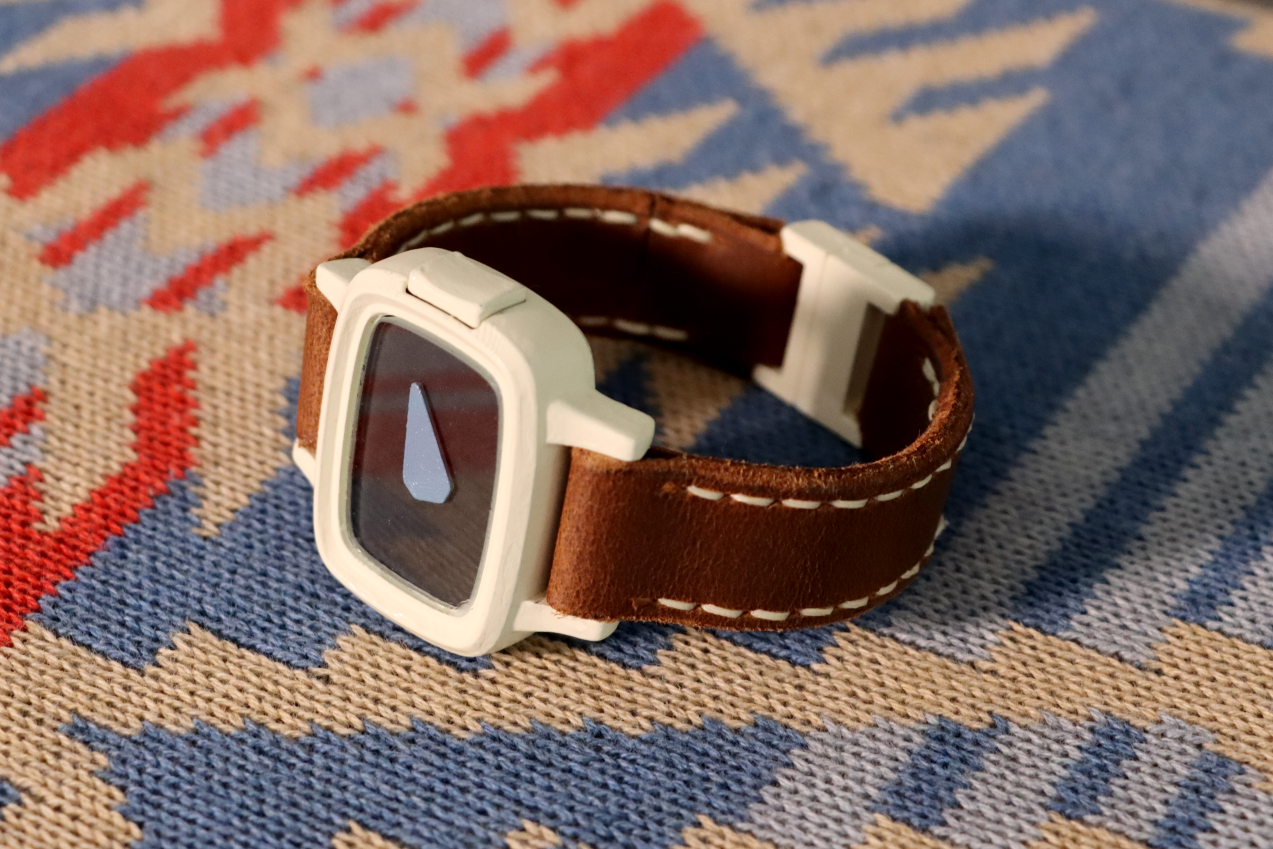
Watch Where You’re Going (WWYG)
A Wayfinding System for Urban Adventure.
A speculative project that proposes a new relationship with wayfinding technology with the goal of helping users have more adventures.
WWYG is an ecosystem of intentional technology consisting of a Smart Compass and a Navigation App for finding destinations.
Using a GPS module and digital compass the compass provides a consistent heading towards the user’s destination, letting them explore different routes and find their way as they see fit.
The app features tools for finding destinations designed around reducing decision fatigue, including searching based on how much time the user has and by the vibe of locations nearby.
Project Type: Capstone project at the Emily Carr University of Art + Design
Role: Sole Designer, with support from mentors Sophie Gaur, Scott Staniland, and Pablo Mariano.
Industry: Outdoors Tech
Tools: Immersive Research, Experiential Prototyping, Rhino, Figma, Arduino
Users: Adults, living in urban and suburban spaces, who love outdoors activities but don’t get to participate as often as they would like due to life circumstances.
Introduction
"Living in a big city, I was hanging out with a close friend of mine. We saw a bus that we’d never seen before going to a place neither of us had gone to. We ended up still in the city and not on some crazy big adventure but in that split second we decided to get on and see where it takes us."
- mid 20s Anonymous Survey Respondent
Problem Discovery:
A core component of the keystone project at ECUAD is following a process of investigation of a topic in order to design something truly novel. As a lifelong hiker, I wanted to investigate the experience of having an adventure, why do people seek out these potentially dangerous and uncertain experiences?
I started by going on hikes and paying attention to the pain points of the experience (e.g. finding parking) and what made the experience valuable (e.g. sensory immersion, discovering new places). This immersive research helped ground my later conversations with Users.
User Research revealed a substantial disconnect between User’s desire for adventures and their actual participation, nearly every user reported having far fewer adventures than they want.
Problem: How can we have more Adventures in our daily lives?
Throughout the project I maintained a practice of having frequent adventures of my own, so that I could better understand the core experience that I was designing for.
This led me to the understanding that an adventure requires:
Uncertainty
Discovery
Immersion
Then I investigated aspects of modern life that stand in the way of these core features, finding:
Navigation apps leaves very little room for uncertainty
True discovery is difficult when destinations are chosen using Online reviews or Instagram posts, but many urban spaces are frequently ignored.
Digital distractions are widespread, making it hard to truly disconnect
User Personas
User Interviews gradually revealed two distinct but related use-cases that WWYG could satisfy:
“Micro-Adventuring” or, the desire to find adventure in the time and space that the user has available.
Disconnecting from the world and connecting with nature, as a mindfulness practice.
Project Goals
Help users have more adventures!
Invite users to consider how their experience of the world is mediated by technology.
Encourage exploration of overlooked urban spaces.
Concept Validation
I was able to validate the core concept with a simple cardboard prototype.
I had users wear the model, and manually adjusted the dial to the correct direction using a compass.
The key learning was that the experience does introduce a level of controlled uncertainty to navigation, and that users were able to reach their destination.
I also noted that the app would need to be able to record the user’s starting position, so that they can easily navigate back to work using WWYG in the coffee-break use case.
Pain Points
Decision Fatigue
For short experiences, Users were experiencing Decision Fatigue.
Using the search bar can take too long to decide on a destination, which wastes the limited time available to the user.
Solution
Suggested Destinations! Users can choose a destination based on what is popular nearby, the general “vibe” of the destination, a time limit, or completely at random.
Learnings
Key Takeaways
Taking the time to understand the core experience is absolutely crucial
User Empathy to help guide key decisions
Sometimes (most of the time), Less is More
Don’t lose sight to the core Problem statement
Next Steps
Developing a minimum viable product
More robust user testing
Exploring AI integration to generate more personalized recommendations
